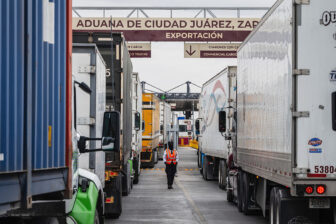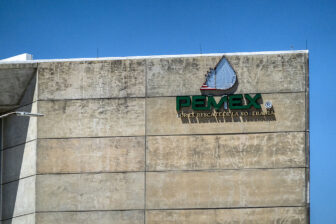MEXICO CITY—Mexico’s new Supreme Court has not yet convened, but its credibility is already on trial. On September 1, its nine elected judges are set to take office amid concern that the ruling Morena party took advantage of the historic June 1 judiciary elections to weaken judicial independence and pave the way toward authoritarianism. In the months ahead, the court will rule on three cases that could reshape the country’s legal order.
A tax dispute with one of Mexico’s wealthiest men, the constitutionality of jailing people without trial, and the continued militarization of civilian life are all likely to be part of the new justices’ baptism of fire. Their rulings will help to answer the larger question being hotly debated in Mexico: Is this an independent court of justice, or just another branch of the ruling party?
In June, in the wake of Morena party’s judicial reform, Mexico became the first country ever to begin the process of electing all its judges by popular vote. In a country with impunity levels above 80% for crimes like homicide and extortion, and where more than 85,000 people are in jail without conviction waiting for their cases to wind their way through the courts, it was difficult to argue that the justice system did not require profound change. But Morena’s reform did nothing to improve the attorney general’s offices or the operations and effectiveness of the police forces.
In the election, voters chose 1,800 local and 881 federal judicial positions, including the nine Supreme Court justices and the entire “disciplinary court,” a new judicial oversight body. However, the process was marred by irregularities—only 13% of eligible voters participated—and even the nation’s electoral authority imposed financial sanctions on some of the candidates.
Morena informally distributed “cheat sheets” (commonly called acordeones) with the names of the party’s preferred Supreme Court candidates. The result was a Supreme Court identical to the “recommendations” of the cheat sheets; all the candidates Morena promoted won.
The judges were elected to long terms of varying lengths; four will serve through 2033, four through 2036, and one through 2039. This indicates that the court and its rulings are likely to be friendly to President Claudia Sheinbaum and the party’s legislative agenda, casting doubt about the future of the nation’s justice system. A series of high-profile cases that the court is expected to rule on in the coming months will offer evidence of just how closely it will toe the party line.
The new justices
Hugo Aguilar, the next Supreme Court president, served at the National Institute for Indigenous People under former President and Morena founder Andrés Manuel López Obrador (AMLO). Aguilar’s negotiations with Indigenous communities were key to the completion of the Maya Train, one of AMLO’s signature projects. After winning his race, Aguilar has repeatedly appeared in public with Morena members of Congress and expressed party rhetoric in his statements.
María Estela Ríos, another justice-elect, branded herself during her campaign as “AMLO’s lawyer,” having served as his legal counsel both during his presidency and earlier when he was mayor of Mexico City. The three members of the current Supreme Court who will remain are all pro-Morena. One is Lenia Batres, who belongs to a powerful political family within the ruling coalition; her brother, Martí Batres, succeeded Claudia Sheinbaum as Mexico City’s interim mayor and now holds a prominent role in the federal government.
The other two are Yasmín Esquivel and Loretta Ortiz, both appointed to the highest court by AMLO and long a part of his inner circle. Their husbands were also close to López Obrador as either government contractors or political advisers.
Three critical tests
During their previous term, this bloc of three justices consistently voted in favor of expanding the military’s role in civilian affairs. The new court will have to decide on several cases involving irregular transfers of funds and powers to the armed forces, and it is likely that this bloc—along with most of the new justices—will once again rule in favor of militarizing civilian government operations and expanding the armed forces’ participation in sectors of the economy, such as infrastructure and transportation.
All nine incoming justices collectively announced, however, that they would prioritize fiscal disputes before tackling these and other questions. It is highly probable that, to curry favor with the public, the new court will rule quickly on one of the cases followed closely by the media.
A likely candidate is that of business mogul Ricardo Salinas Pliego, whose companies allegedly owe hundreds of millions of pesos to Mexico’s tax authorities. He denies wrongdoing, and his case is now before the court. Salinas is one of Mexico’s most controversial and high-profile businessmen, so his case offers the new justices an opportunity to act in line with their anti-elitist rhetoric and send a message of zero tolerance for tax evasion.
A crackdown on tax evasion among the business elite is a popular prospect, and also helps the viability of Morena’s redistributive political project. But the details of the ruling will also be telling in terms of the legal arguments and interpretations the justices use, as well as the severity of any penalties handed down.
Pre-trial detention will likely prove a thornier issue for the court. In 2023, the Inter-American Court of Human Rights ordered Mexico to change its constitution to eliminate the “automatic preventive prison” mechanism that has allowed authorities to incarcerate thousands of people without due process, without a conviction, and without the possibility of a proper legal defense, according to its findings.
The Supreme Court will have to decide whether and how to comply with the Inter-American Court’s order. This case could pit the justices’ potential political loyalties against their past populist rhetoric. Preventive prison disproportionately affects the poor, yet Morena has repeatedly expanded the list of crimes that warrant imprisonment without a definitive ruling—on the dubious premise that this would improve public safety and help combat organized crime.
Since one of Sheinbaum’s top priorities is to tackle crime and cartels, political pressure on the new justices to uphold the constitutionality of this practice is likely to be intense. Sheinbaum even publicly asked the outgoing justices to leave the issue of mandatory preventive prison for the newly elected justices to decide. That shows just how important this issue is to the president, and that she believes the new court will be more amenable to her position. Their decision will be key to understanding not only the court’s political alignment, but also its commitment to civil rights, such as the right to a fair trial.
Other courts to watch
The judicial reform also included the election of the new disciplinary court and federal and local lower courts. On paper, the disciplinary court is meant to provide oversight to prevent corruption, conflicts of interest, or undue influence in the court system, including the Supreme Court. Analysts warn that in practice, however, it could instead pressure judges into siding with ruling party interests.
For their part, local and federal courts handle the everyday cases that most directly affect citizens’ lives. Historically, these courts have been politicized and inefficient, and the reform did little to address this beyond electing the judges. Efficiency may improve somewhat, and even modest steps forward in the delivery of everyday justice would likely be greeted with broad approval by most Mexicans.
Politicization, though, is unlikely to improve and could worsen. The first rulings of the new Supreme Court will provide clear indications of what the judicial reform will mean for the years ahead.









